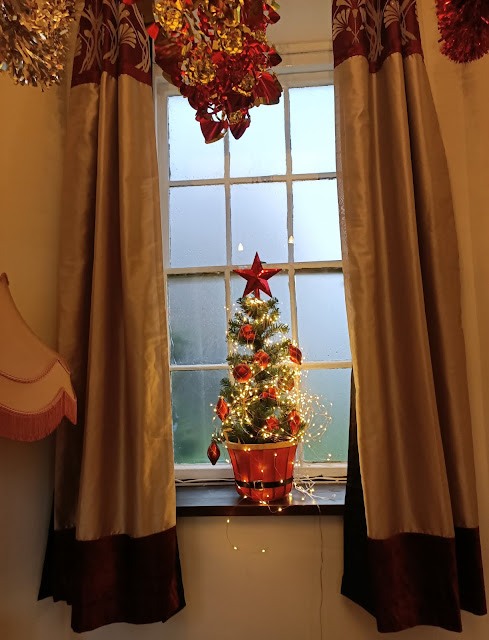Just by Chance
OPEN GARDEN & PHOTOGRAPHIC EXHIBITION
I’ll start this post with news of our next event later this month. The gardens at Betley Court will be open again on 20th and 21st May. We’ll be hosting a display of photographs and artifacts gathered through the process of the rebuild after our fire in 2019, in the unrestored Nash Room. This includes the stunning photographs created by professional photographers Darren Washington and Sarah Peart of Centre Space Arts. They record the master craftspeople, different trades and stages of the rebuild and make a unique record of the restoration of Betley Court.
Tickets are £7.50 and
can be bought at the gate on the day, and include admission to the exhibition,
access to the gardens, and a complimentary hot drink and snack in the visitors’
hub.
The title photo shows our wonderful site manager, Derek from Midland Conservation Ltd, building our temporary staircase. (Photo: Washington and Peart)
A Chance Finding
Following on from the
last post from the Dead Gardeners’ Society, where I looked at William Andrews
Nesfield’s design for Betley Court Gardens that was never implemented, I found another
interesting piece of information about the formal gardens, just by chance, in a
dusty old portfolio in the attic.
 |
| The original drawing on tracing paper |
DF’s plan also marks the position of a sundial surrounded by radiating flowerbeds (GFb). It notes too, the position of other shrubs and flowerbeds, along with the names of some of the specimens present, including red cedar, variegated holly, mahonia, yew and several rhododendrons.
Rosie Fyles explains this style in her article Victorian
Garden Design: 5 key elements for your backyard[3]
for Homes &Gardens magazine,
“Fuelled by exploration and plant breeding, and an increasing ability to
source plants from retailers, the Victorian gardener had access to an ever-swelling
array of ‘new’ plants. With improved and greater access to specialist bedding
plant seeds, the ‘bedding plant boom’ reached even small suburban gardens – and
characterises English gardens today. Victorian garden design reflected ways to
display and showcase these plant finds……
The fashion was for vibrant bedding displays in island beds in island
beds centrally placed in lawns. These beds came in a variety of forms, most
commonly a circle but also stars, crescents, hearts, butterflies and even
tadpoles”
We know plants used in these garden designs were grown in the glasshouses of the walled garden (now the high brick-walled boundary of Court Walk), because they are mentioned in the head gardeners' note books, in auction catalogues, and in reminiscences by people who worked in the gardens. These include calceolarias (the pocketbook plant), coleus, lobelias, pelargoniums, verbenas, petunias and pansies.
This style of design was popular in the 19th century, and often homeowners would theme each bed, for example creating specific flowerbeds for specific parts of the world, reflecting that passion for collecting plants. This postcard (above), from Burnley Park shows such a scheme, and examples of this style of gardening can be found increasingly rarely in our public parks. Locally, Queens Park in Crewe and Stafford’s Victoria Park still contain well-tended island beds.
 |
| A page from a Victorian horticulture magazine showing readers an illustration of island beds (dated 1880, publication unknown) |
What
this fragment of Betley Court Garden’s past shows is how fashions in
horticulture changed, reflecting the preoccupations of their owners. Clearly
TFT wanted to sweep away these island flowerbeds, preferring a grander, more
formal design. Perhaps that reflected his success and wealth, perhaps his
desire to ‘keep up with the Jones’. What ever his motives, all we have left is
this one piece of paper showing what was.
All
best wishes
Ladybird
Su





Comments
Post a Comment